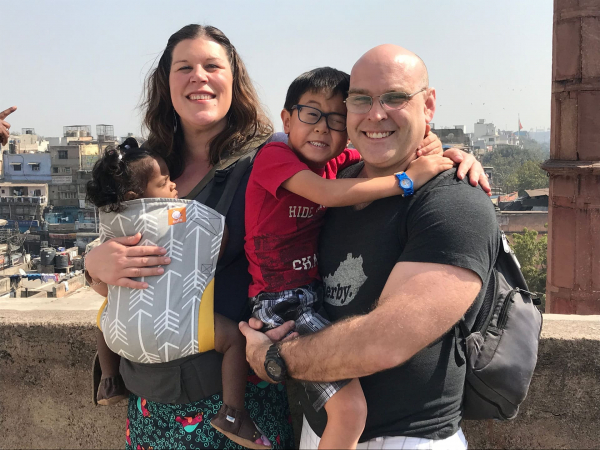How Does Adoption in India Work?
According to the Indian government-run CARINGS website (Central Adoption Resource Authority) from April 2017-March 2018, 3,276 in-country adoptions and 651 intercountry adoptions occurred. One of those intercountry adoptions was our daughter, Mira. Having journeyed through the mounds of paperwork to finally welcoming our daughter home, I have a better understanding of how adoption works in India. Here’s what you need to know:
Up until 1890, adoption was considered a taboo subject in India. The Guardians and Wards Act of 1890 allowed for formalized in-country adoptions to begin, and in 2000 the Juvenile Justice Act recognized fostering as a means of caring for orphaned, abandoned, and surrendered children. The Juvenile Justice Act also laid the foundation for the adoption of children by non-Hindu parents, which had previously been prohibited due to a law in the 1950s. In the roughly 20 years since then, adoption laws have been changing in India. In 2015, under a new Juvenile Justice Act, CARA (Child Adoption Resources Authority) was established, and all institutions engaged in the care of children were formally registered. This allowed for the database of available children to be more well-maintained, and CARA was able to effectively streamline the adoption process.
The children are available for adoption range from infants to teenagers. Most live in state-sanctioned orphanages around the country. Per the terms of the Hague Adoption Convention, children available for intercountry adoption must first be placed for in-country adoption. If in-country adoption is not possible and the authorities of CARA rule intercountry adoption is in the child’s best interest, then the child will be eligible for intercountry adoption. As a result, most children available for intercountry adoption have mild to moderate medical needs (such as heart conditions, vision impairment, hearing impairment, developmental delays, cleft lip/palate, and sometimes simply their age).
The first step in intercountry adoption is to find if you are eligible. Each country maintains its own list of age, marriage, and income requirements for prospective adoptive parents. A good place to start is the U.S. Department of State website which keeps all countries’ requirements up-to-date. Next, you will need to find an accredited adoption provider, complete a home study, file an I-800A (which your agency will help you do), and work to complete your dossier. Upon dossier submission and acceptance by CARA, you are eligible to be matched with a child through the CARINGS database. For OCIs (Overseas Citizens of India) or NRIs (Nonresidents of India or Indian origin), the process is somewhat different in that it is possible to receive a referral for a healthy infant, but the wait times can be quite long (8-15+ months). If you are open to either gender, an age range, and mild, correctable needs, your wait time for a referral can be considerably less (1-6 months). It is also possible to request a child from a certain region (like Maharashtra for example), but this too can result in longer wait times.
Once you receive a match, you will have a few days to review the child’s file. If the child is a good match for your family, you will move on to the court process. Unfortunately, the court hearing in India may be the longest part of the process as each adoption has to be approved on the local level, and many regional courts are still unfamiliar with intercountry adoption. Some states require prospective adoptive parents to appear in court for their child’s hearing, so be sure to ask your agency if they have worked in your child’s region before and, if so, what their experiences with the court have been like. It should be noted, too, that CARA is taking active steps to streamline the court process, but it could be a few years before significant improvements are seen.
Following court approval, you will receive notice of your child’s passport and adoption decree and make your way to India! Plan to spend a few days in your child’s home state to visit the orphanage, speak with the staff, and learn about your child’s region. The more you know about your child’s early life, the easier the transition home will be once you return home. All U.S. families will then travel to Delhi where the U.S. Embassy is headquartered and from which you will receive your child’s visa. Most families stay in Delhi for 7-10 days. Once home, you will be required to submit post-placement reports at 3, 6, 9, 12, 18, and 24 months. It is important to submit these post-placement reports to your adoption agency and CARA on time as these reports serve as a way for India to monitor the health and well-being of its adopted children.
Interested in in-country Indian adoption? The process works very differently so please visit the CARINGS website for information on how to register as a PAP (prospective adoptive parent) within India.
Have you adopted from India? What was your experience with the process like? Any tips for those thinking about beginning the journey?









